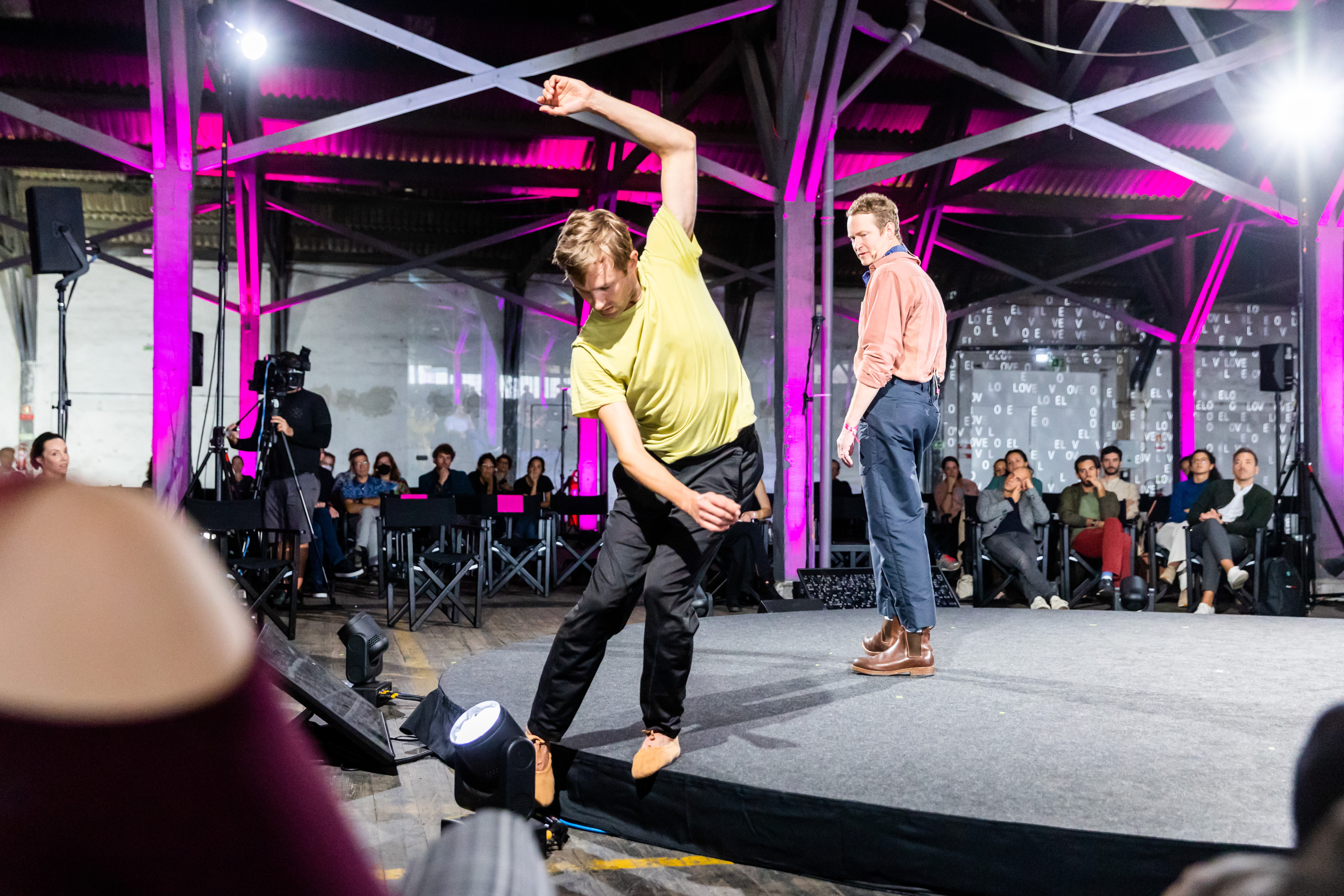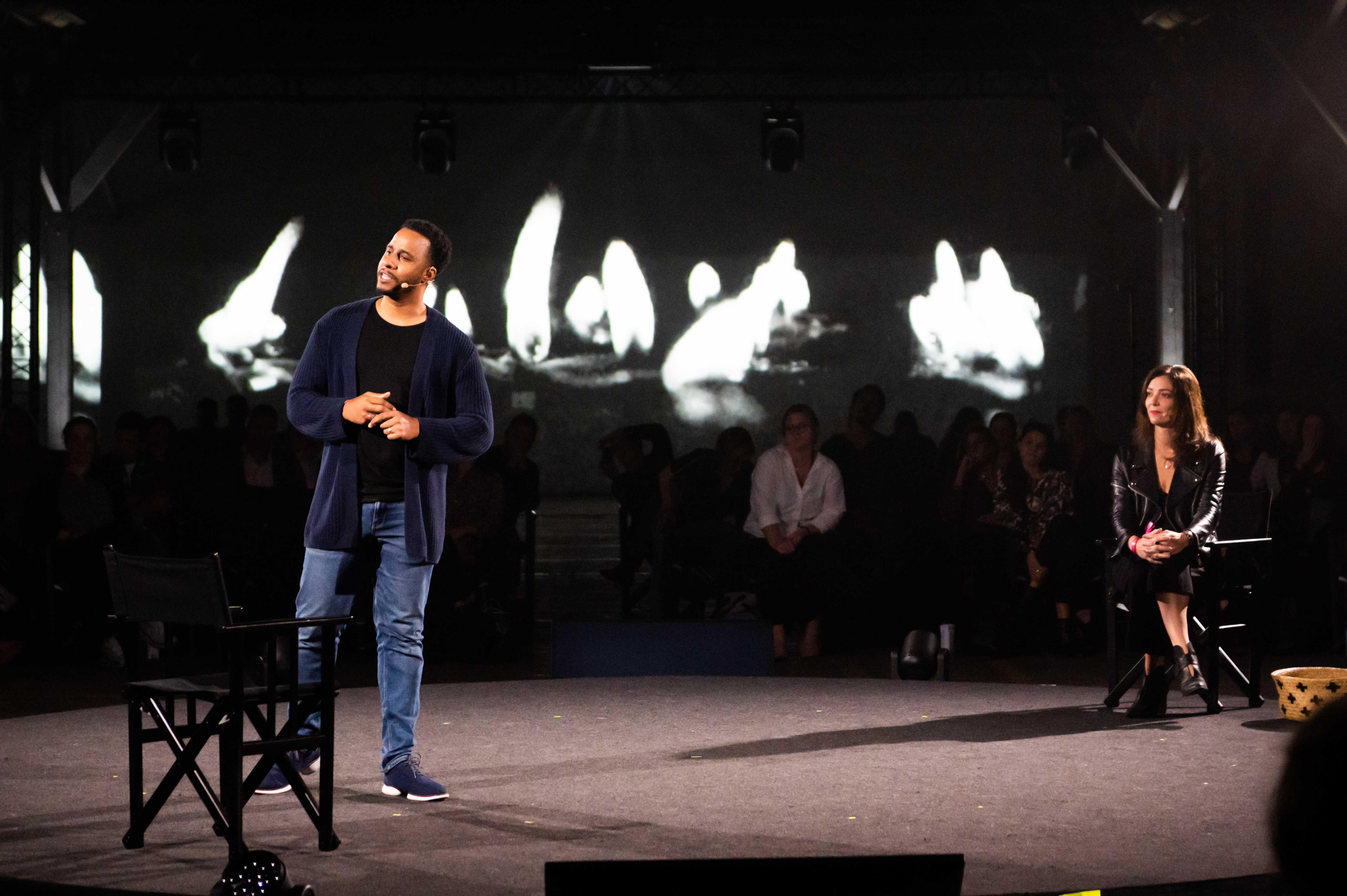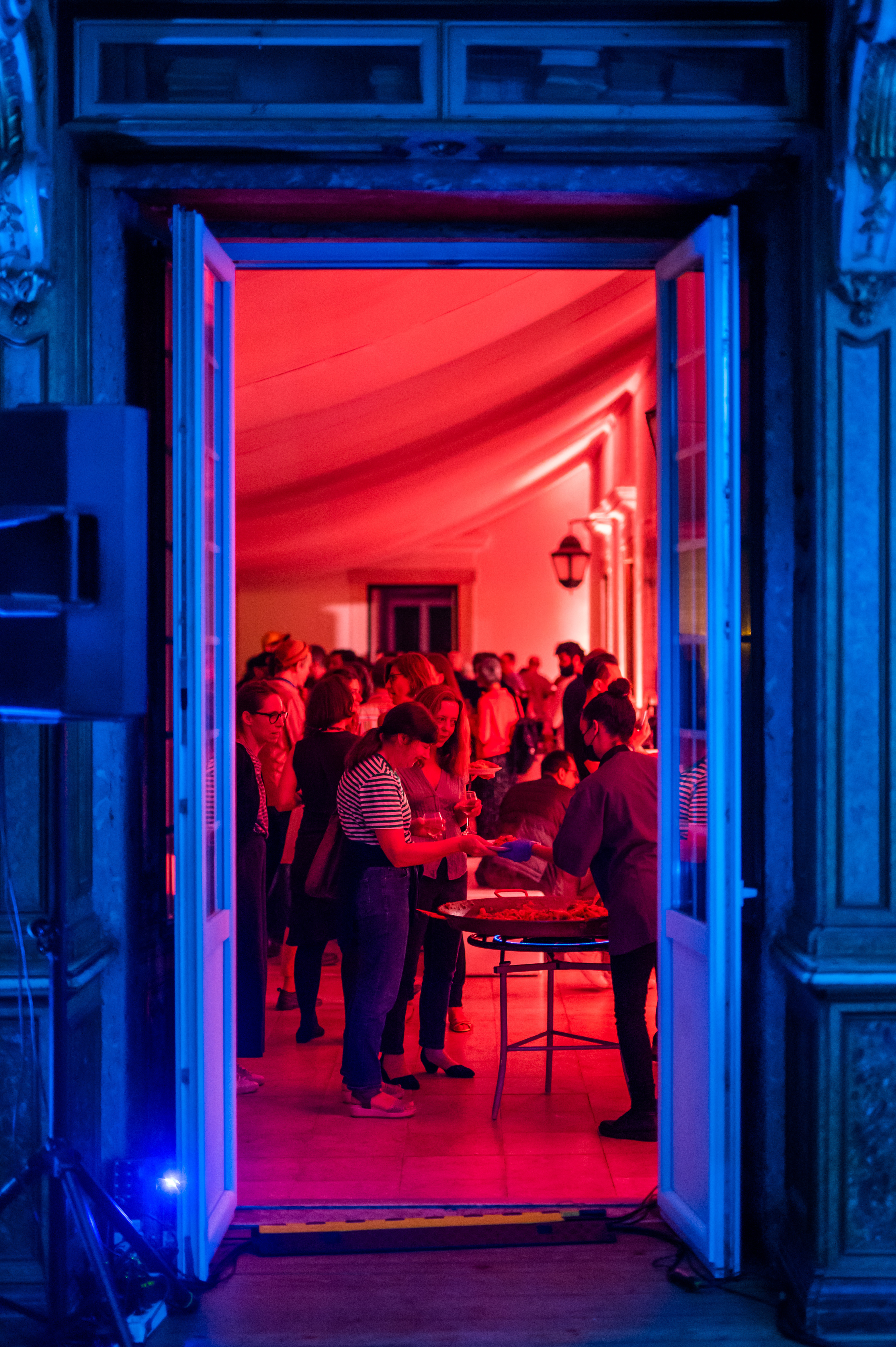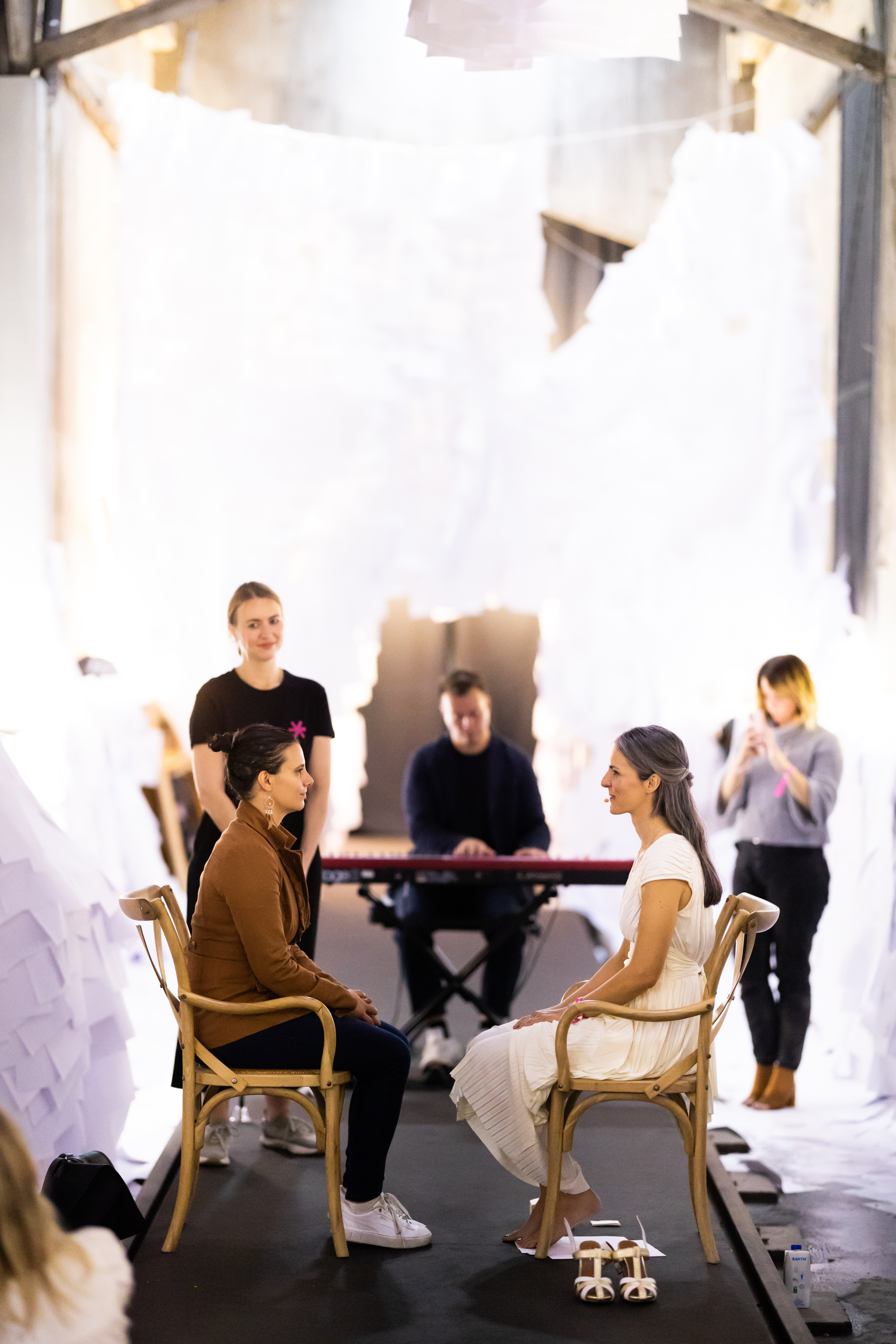Coming Together

We all know what it looks like: the one guy who had the idea, who created the plan, who is remembered in statuary or promoted to the C-suite faster than his peers. Western culture has revolved around the celebrated individual for a long time. But as Mia Birdsong, who will be joining us on Thursday at 18:00 GMT, argues in How We Show Up:
“When we are oriented toward doing it ourselves and getting ours, we cut ourselves off from the kinds of relationships that can only be built when we allow ourselves to be open and generous.”
In fact successful collaborations are so necessary that one could argue that we literally cannot afford to do them badly. At this time in history, you could even say true community is an absolute must, a matter of great urgency. So let’s get specific about how it’s achieved.
In this issue:
- Who (or what) is your community’s third party?
- Can you feel the structural love?
- Turning strangers into community
- What has worked for community in, and through, the House
- 15 questions
Who is your third party?
In “Move Through Uncertainty,” a 60-minute session at Concrete Love, dancer and choreographer John Michael Schert and his partner, Brett Perry, deconstructed and reconstructed a dance choreography to derive lessons for leadership, creativity, and collaboration. Encouraging attendees to step into the unknown, to explore the edge and the precarious, they demonstrated how intuition, improvisation, somatic intelligence, and “art-making” can help us navigate a complex world.
It was a wondrous session, so elegant and true that it moved many in the audience to tears. We were witness to a leadership lecture and a leadership performance, a reflection on beauty and the making of beauty at once.
John Michael’s presentation had many striking lines, but one observation stood out for me: the importance of the “third party” in relationships. Person to person, 1:1, he argued, we are usually able to resolve our differences, find common ground, and align. The complicating factor, however, is the presence of an actual or imagined third party—the voice in our heads that reminds of us the judgment of the public, a peer group, or a loved one; a codex, an image, a moral authority, or simply a social norm or convention: Would they approve, or at least validate what I’m thinking? Would they see my compromising as betrayal, my surrender as weakness? What narrative would they construct? Will they dismiss as awkward contradictions the multitudes that I contain?

While reminiscent of Freud's superego, the concept of the third party is less of a conscience and more of a spectator. The third party affirms a collaboration as vital. True communion between two people is only possible if at least one third party is part of the pact. We may feel friendship or love as a couple, but we perform it in front of others. The third party provides a frame against which we can define ourselves and find meaning. It is no coincidence that if relationships begin to erode, it is often a third-party fail, and one solution is to replace the inactive or no-longer-effective third party with another one: the therapist.
The importance of a third party applies to communities, too, which in essence are nothing but a string of relationships and collaborations connected through a shared purpose and shared rituals. But what is perhaps even more important is that in a functioning community, every member serves as a third party, actually or virtually, constantly or occasionally—like a circle where everybody can see everybody, and holds one another accountable.
The third party provides the transcendence that true community needs. Otherwise it’s just a tribe.
When I wrote my first book, The Business Romantic, I assembled an “inner circle” of people I knew really well alongside professional acquaintances and strangers whose work I admired. I invited them to join me for a one-day event in Munich in January 2013 to present my nascent idea and ask for their feedback, guidance, and support. They served as the third party for my personal quest, but by doing so they became my community. We became a community—and eventually, the House of Beautiful Business.
—Tim Leberecht
Structural love
Once you’ve formed your community, what can you expect it to do? M. Scott Peck, whose 1987 book The Different Drum we included in last week’s list of titles that bring clarity, writes about the problem-solving ability of community. Once you have a group of people who’ve formed a bond with one another, who accept each other as they are without trying to change or convert them to a particular view, a powerful sort of hive mind is unlocked: Instead of each person trying to get credit for coming up with the “best” idea himself, everyone puts aside their egos and works on a solution—often, Peck writes, with remarkably speedy and productive results.
In last week’s Roundtable with Angel Acosta, Miriam Meckel, Esther Perel, and Léa Steinacker, Angel talked about online communities during the pandemic, and about another one of the superpowers of coming together: “structural love.”
“I haven't seen my grandmother in three months. She’s 95 years old, and I love her to pieces. So I want to take a moment to touch on the grief that comes with the loss of our previous lives, the routines and patterns that we had. At the same time, I’ve seen an incredible upsurge in intentional communities online. So, on the one hand, this moment creates a lot of isolation for many. But I’ve been in spaces [online] with people from all over the world, who have been able to come together and talk specifically about issues of racial equity, structural inequality. In the midst of this depressing moment of being isolated, what does it mean to engage in a kind of structural love in digital form? There is potential there—and I’m very optimistic—in a historic way.”

Talking to strangers
This Thursday at 19:00 GMT we’ll sit down with Etienne Fang to talk about the power of talking to strangers. Etienne’s project began in the wake of last year’s gathering of the House of Beautiful Business, The Great Wave, when she joined a group of other women—none of whom she’d previously met—in a Ripple on WhatsApp. They agreed to bring five values to the pop-up community they’d formed: curiosity, creativity, confidentiality, communication, and commitment. The result, as Etienne and co-author Shannon Mullen O’Keefe describe it, was been like opening up to your Uber driver, but better:
“Since you may never see the person again, there is less risk of being rejected or feeling misunderstood. A group of relative strangers offers very few preconceived notions or judgments that might get in the way of real conversation. This creates the space for deeper reflection. Listening to all the ins and outs of what is really happening behind the scenes in women’s lives gives a more complete picture of life. Asking and answering all of these questions gives way to reflecting, learning, and new bonds forming.”
What else might a community of strangers do for you? We’re looking forward to hearing more from Etienne later this week.

Community at the House
To build a House—a community of people with a shared desire—takes a village. There’s no efficiency-enhancing, automated process to enable serendipitous encounters, facilitate meaningful conversations, and nurture relationships. It takes giving more than is asked as much as responding, adaptively and compassionately, to hold a living, breathing space that is brave and safe.
Over the past four years, we’ve been working on laying the foundation for evolving from an annual gathering to a self-sustaining community. And in so doing we’ve learned there are two ways people foster community at the House: Up-close and suddenly personal, and at a safe distance which—via collaboration—collapses into a generative intimacy over time.
Since the first gathering in 2017 in Lisbon, “mystery meetups” have been an integral part of the House. They always take place ahead of the official doors-open, and they are one-on-one, in a select location within the city, such as a café or near a fountain in a park, with both participants not knowing who will show up. The tender thrill of meeting someone you don’t know, while sharing the excitement of entering the House, has become a magical formula, and an antidote against agenda-driven business-card-exchanges and transactional networking. And, as it turned out in this year’s online Resident Circles, it works online, too. As House Resident Esther Blázquez Blanco showed with an exercise of looking into the eyes of a stranger, silently, at Concrete Love, “to mirror is a gift.”
Then opposite to the serendipitous path, the House Work groups self-organize around a pre-existing goal set by the House, and have been a surprisingly bold—and productive—response to the question: is collaboration possible? In April we introduced ten topics, from the future of work to cryptocurrencies, to seed them. Five House Work groups subsequently formed, in sizes from 5 to 15, and held regular meetings, with the only project deadline being the presentation of first outcomes at our annual gathering, Concrete Love.
The trick? A sense of agency and ownership regarding the “how” of organizing and working together. The results are first concrete steps of making beautiful business real, and they speak for themselves, including a definition of seven ingredients of a beautiful work life, ten moral questions for tech leaders, and an exploration of making social media beautiful again. The conversation for a beautiful business fund is ongoing, and the metrics of beautiful business group will continue their exploration of “embodied innovation” as part of next week: Measure It To Last.
—Monika Jiang

15 questions
What have you accomplished alone?
Did you really do it by yourself?
Who helped you?
Are you part of a community now?
Do you want to be?
Where could you create one?
Do you find yourself wanting to fix people more often than accepting them?
Do you want to fix yourself?
When’s the last time you were surrounded by people who thought you were just fine as you are?
Do you want to convert other people to your beliefs?
Does that get in the way of working on a team?
Do you like to work on teams?
What if no one on your team at work had a fragile ego?
And you didn’t have one, either?
What would be accomplished?
